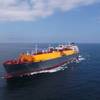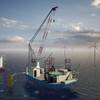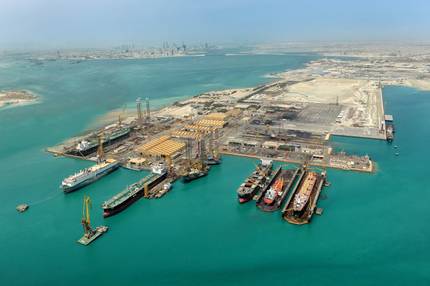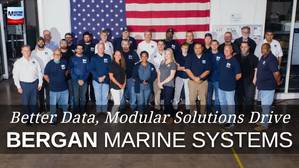A touted new procedure for welding cost Brad Phillips his new vessel, when the process proved faulty and incomplete.
Boat buyers in the current depressed market need to be aware of shady operators that might not be able to deliver all they claim. One recent victim of this situation was well-known Alaska excursion vessel operator Brad Phillips.
At the start of 1997, Phillips contracted for a new $4.2 million all-aluminum catamaran, hoping to have the boat ready by the Alaska summer season. The man Phillips approached to build the boat, Dan Johnston, appeared to have the right qualifications and a new trick for aluminum welding that might save some money. In the end, Phillips lost his money and saw his boat cut up for scrap because the welding failed.
According to Phillips, Dan Johnston headed up a company called Falcon Marine at Port Townsend, Wash. Johnston claimed to have a "patented high-speed welding process" that could be used to build aluminum vessels "faster, better, and cheaper than any other boatbuilder."
The boast seemed plausible. Johnston had already turned out a 52-ft. aluminum speedboat for Florida owners and had a large building hall available for new construction. Caught up by Johnston's claims, Phillips signed on the dotted line and in early 1997, construction began what was to be called Klondike Express, a 420-passenger, 38-knot catamaran.
Johnston told Phillips the boat would be in the water by May - a remarkably short construction time. The vessel started to come together quickly, with the twin hulls fabricated in an upside down position, but even in the early stages of construction it suffered from welding problems.
Buckled deck plating was easily noticeable by visitors, and Johnston's "patented welding process" never seemed to come together. Most of the welding - in fact - was being performed by unqualified and uncertified welders, said Phillips.
Later, it was even disclosed the foreman of Falcon's fabrication department had little to no knowledge of either welding or boatbuilding. When USCG teams began to arrive to begin certification inspections, they were shocked by the boat's condition and the manner in which it was being assembled.
There were no approved plans on site and construction apparently started without even minimal plan approval. One USCG inspector noted in his log that "every weld defect known was commonplace and rampant; longitudinal and crater cracks, inadequate penetration, undercuts, incorrect weld size and shape, poor fit-up, and generally sloppy workmanship."
As time progressed, the USCG found inspection of the project increasingly difficult because there was never a set of approved construction plans available, nor had Johnston established a quality control program. No one seemed in charge of the project, or at best, a different person was in charge during each USCG visit. Inspectors found themselves looking at every individual weld - and condemning most of them.
By April they were issuing "Letters of Concern" to Johnston, but to little avail. The man appeared more interested in expanding his holdings at Port Townsend through dealings with the local port commission than in completing Klondike Express.
As the May launch date rolled around the USCG was getting upset with Johnston. On May 13, 1997, it sent the following note: "This is intended to reemphasize our concerns regarding construction of Klondike Express. To date no plans have been approved by the USCG for this vessel, yet most of the vessel's twin hull and bridging structure have been assembled."
Nevertheless, the boat still wasn't ready for the water, nor would it ever be.
By September, the USCG was noticing correction marks made by its inspectors were being removed as soon as they left the shop. In a Sept. 10, 1997 "Letter of Concern" it wrote: "We are writing this letter to express our continued concern regarding the construction and certification of Klondike Express. We have repeatedly identified excessive welding/fabrication defects in those areas presented for inspection. The markups made by several marine inspectors during structural inspections have been removed prior to their completion of the inspection. Such markings are to remain in place until the structure/welding has been fully approved by the attending marine inspector."
While Johnston paid little attention to USCG law he couldn't get by the Law of Gravity. As the double hull had been started upside down it eventually had to be flipped to add the superstructure. Such were the stresses imposed during this procedure that every bad weld exposed itself by popping, and once the hull was reset on blocks, it began to sag.
This condition was noted by the USCG on October 28, 1997. Two days later, Johnston sold the boat to Phillips in an unfinished state. Although Phillips attempted to salvage the situation by bringing in outside naval architects, it was too little and too late.
By February 1998, Falcon Marine was broke. Dan Johnston left town leaving 85 employees with unpaid wages and a multitude of suppliers with worthless checks. Klondike Express was condemned, its structural problems incapable of being resolved. On September 16, 1998, it was auctioned off for $24,000 and cut up for scrap, its propulsion gear returned to suppliers.
Phillips, older and wiser, hopes to have a replacement 340-passenger, 35-knot catamaran completed by Nichols Brothers this year. And he's learned a valuable lesson about boatbuilding: If it sounds too good to be true, it probably isn't true.
Sponsored Content
Still trying to leverage digital in your operations? Create your own advantage

Pacific Titan Arrives on the U.S. West Coast — Redefining Heavy-Lift Capabilities
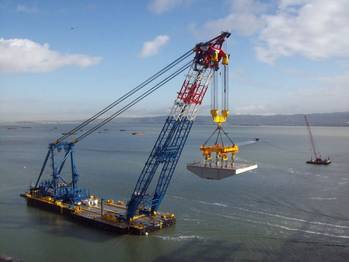
October 2025
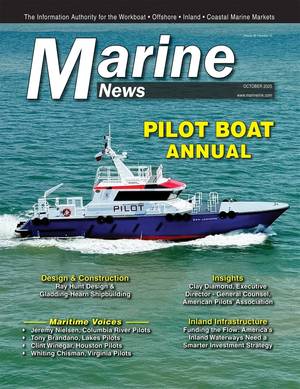 Read the Magazine
Read the Magazine

 Read the Magazine
Read the Magazine
This issue sponsored by:

Evolution of the Pilot Boat: From Wooden Schooners to High-Tech Launches
Subscribe for
Maritime Reporter E-News
Maritime Reporter E-News is the maritime industry's largest circulation and most authoritative ENews Service, delivered to your Email five times per week





